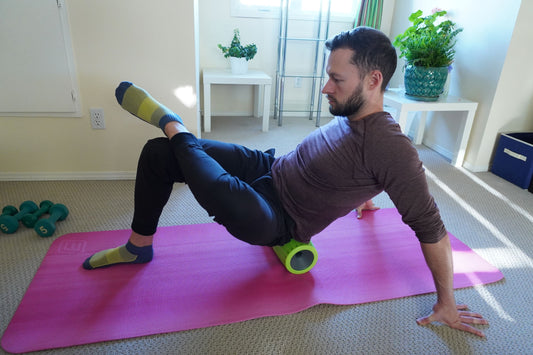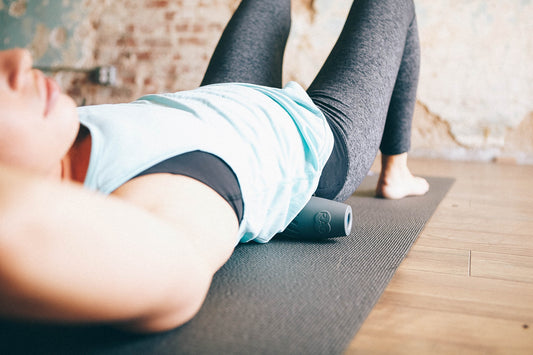Implement these 10 easy tips to make the most of your workout.
These days, time is a commodity, and no matter whether you train at home, on the road or in the gym, every second you spend sweating is valuable. Use these 10 tips and suggested routines to develop your inner and outer athlete efficiently and effectively, and get in, get out and get on with your life.
Lift Heavy
Using a weight that is heavy enough to induce fatigue by the 12th rep is the sweet spot when it comes to time optimization. In this range, you’re recruiting more muscle fibers, making the workout more intense, and giving your body more potential to grow and improve.
“To determine the correct weight for you, see whether you can do the exercise for 12 to 15 reps,” says Maurie Cofman, CMES,CES, TBMM-CES. “If you can do more, it’s too light. If the last two reps are challenging, it’s perfect.” Try a biceps workout that uses straight sets of standing dumbbell curls, EZ-bar preacher curls and seated dumbbell hammer curls. Do a warm-up set for each move using a lighter weight for about 20 reps, then increase your weight and do three to four sets of 10 to 12 reps per move.

Jumping rope burns major calories, improves coordination, endurance and cardiovascular prowess.
Get Jumpin'
Jumping rope is one of the most effective and efficient ways to incinerate mad calories in a short amount of time — up to 20 per minute if you’re really cranking. It also improves coordination, endurance and cardiovascular prowess. Warm up by jumping rope easily for five minutes before a workout, or combine jumping rope with strength moves for interval or high-intensity interval training, recommends Nancy Jusino, NASM-CPT, PES. For example, alternate a minute of jumping rope with a minute each of different strength moves such as squats, pull-ups, push-ups, lunges and V-ups. Cycle through this alternating pattern one to three times to amp the intensity and the calorie burn.
Don't Forget to Roll
Using a foam roller eliminates muscle tension and promotes recovery, according to a study published in the Journal of Athletic Training. It works by smoothing out fascia — the lining surrounding your muscles — which can develop adhesions that restrict movement. “Foam rolling preworkout also helps increase your range of motion and your strength potential,” Jusino says. In other words, when your muscles are able to move freely, you can harness more of your strength to perform a lift, thereby maximizing your training time.
Spend five to 10 minutes before a workout rolling the muscles you intend to train for optimal mobility, then roll them again afterward to avail yourself of the recovery benefits. For example, roll out your upper and lower back, rear delts, hamstrings, hips and glutes around a deadlifting session.

Medicine balls develop explosive power and train the body to absorb and redirect force, improving athletic performance.
Incorporate a Medicine Ball
Because it requires you to engage several muscle groups at once, a medicine ball simultaneously helps develop coordination, agility and strength while boosting workout intensity. “Medicine balls are great for power exercises like slams but also can be used for compound exercises like a squat to overhead press,” Jusino says. Begin with a 3- to 5-pound ball and work up from there as you improve. Try using a medicine ball in an explosive power workout that includes moves such as ball slams, seated Russian twists, wall balls, side throws and push-ups on the ball. Do eight to 10 reps of each for two to three rounds.
Elevate Your At-Home Game
Attention, at-home exercisers: You do not need to stay within the confines of your home gym! There are likely many facets of your home that you can leverage to infuse variety into a stagnant routine. “For instance, stair climbing is a great lower-body and cardio workout, and any kind of steps make great push-up and dip partners,” says Grace DeSimone, CPT. Take stairs two by two, or step up and down laterally to change things up. “A kitchen counter can make a great ballet barre for pliés, calf raises and leg lifts,” she adds, which comes in handy when you have to multitask while making dinner. Get creative — choose a different room each day and find three new ways to exercise using features or furniture in that room
Meet Metcon
Metabolic conditioning — or metcon — is a kind of circuit training done at high intensity in order to improve the efficiency of your energy systems and incite metabolic change. It’s a great timesaving technique because it combines cardio with strength work, and your heart rate stays elevated near maximal output for the duration of the session. Choose one piece of equipment, for instance a barbell, and do five rounds for time of 10 front squats, eight push presses and six burpees over the bar.

Exercise bands are handy exercise tools: they're extremely versatile and easily portable.
Use Bands
Exercise bands are versatile, portable and — most of all — adjustable. You can easily change your training tension from rep to rep just by changing your body position or the length of the band — no need to stop and swap weights or load plates. Jusino suggests having three different-weight bands — light/medium for shoulders and arms, medium/heavy for back and chest, and heavy for legs.
Try a push-pull circuit for a fresh, efficient way to train your upper body: Do supersets of standing rows with standing chest presses, biceps curls with overhead triceps extensions, and lateral raises with front raises. Challenge yourself with a drop set of each move at the end: Choke up on the band for more tension at the start, and slowly lengthen the band to make it easier as you move through the set.
Don't Forget Dumbbells
Versatility makes dumbbells the ideal training tool when time (or space) is limited. They can be used to train functional movement patterns, and a simple change of body position, tempo or rest interval will intensify a workout, according to Jusino. They’re also great when the gym is loaded with people — just grab a few sets and power out a total-body circuit using compound moves in an empty corner of the facility. For instance, do reverse lunges with a biceps curl, lateral lunges with a front raise, a weighted overhead squat, renegade rows and/or a burnout set of 50 lateral shoulder raises or calf raises.

Incorporate cardio and strength moves into a Tabata to up the ante.
Try Tabata
Nothing is more efficient (and nauseating) than a Tabata, which research has shown burns a ton of fat and is as aerobically effective as a 60-minute moderate-intensity workout. This training method alternates 20 seconds of work with 10 seconds of rest for eight rounds (a total of four minutes) and demands all-out intensity during the work periods to make the magic happen. You can use cardio moves, strength moves or a combination of both when crafting a Tabata. For instance, you can do an entire Tabata of sprints (eight 20-second sprints, eight 10-second rest periods) or a Tabata of alternating push-ups and jumping jacks (four 20-second rounds each).
Grab a Stability Ball
Exercising on a stability ball gives you more bang for your training buck because it forces your core to work harder — no matter what bodypart you’re training — eliminating the need for separate balance or posture-specific exercises. “It also helps work your stabilizers, the smaller muscle groups that surround your shoulders, hips, knees,” Jusino says. Try a bodyweight circuit using a ball that includes moves like wall squats, hamstring curls and glute bridges for lower body and push-ups, hyperextensions and planks for upper body.
Written by Nicole Clancy for Oxygen Magazine and legally licensed through the Matcha publisher network. Please direct all licensing questions to legal@getmatcha.com.



















